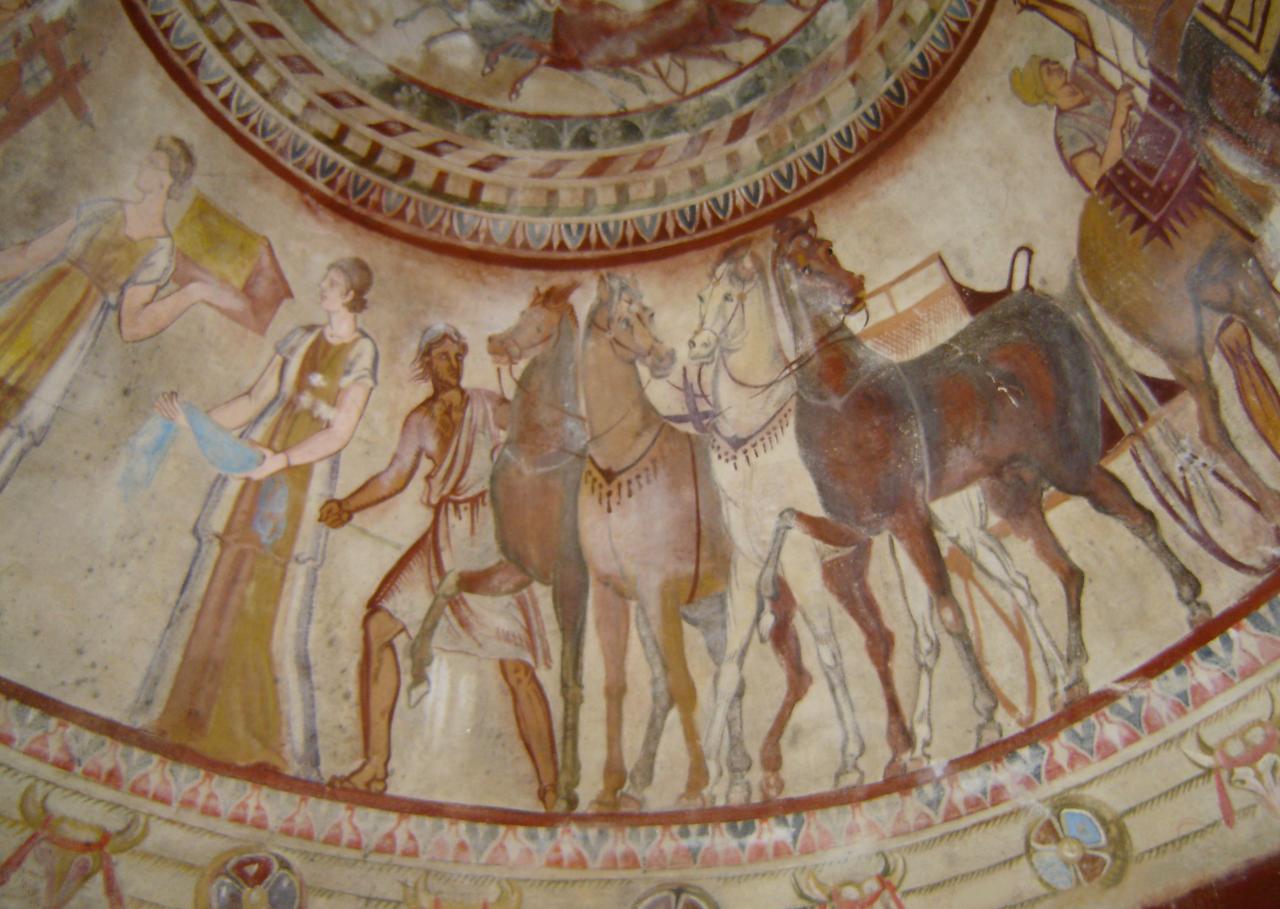From the Thracian Heritage Sites of Kazanlak to Buzludzha

- Duration: 6 Hours (approx.)
- Location: Kazanlak
- Product code: SGHTSKZLK
About
A sightseeing trip to the history-rich town of Kazanlak - a place where the Valley of the Roses and the Valley of the Thracian Kings overlap. We will visit its archeological landmarks, including the Golyama Kosmatka tomb and the Kazanlak tomb – a UNESCO World Heritage Site. Just a short distance from there is the Shipka monastery, notable for its architectural style that is unlike any other monastery in Bulgaria. From there we’ll visit the Shipka monument of the Liberation and move onto the Buzludzha monument.
Highlights
- Explore the Golyama Kosmatka tomb, circa 5th century BC
- See the Kazanlak Tomb UNESCO World Heritage Site and its exceptional ceiling mural
- Visit the Shipka monastery
- Learn about Bulgaria’s history at the Shipka Monument
- See the famous Buzludzha monument
Description
This trip takes us to the city of Kazanlak – a place where the Valley of the Roses and the Valley of the Thracian Kings overlap. It is a historic center surrounded by several major archeological sites. Particularly important are the Thracian tombs in the area.
There are around 60,000 burial mounds scattered across the territory of Bulgaria, only 1000 of which have been uncovered and studied. What is known as the “Valley of the Thracian Kings” is where the rulers of these ancient tribes were buried with their horse and items they might need in the afterlife.
The Golyama Kosmatka tomb near Kazanlak belonged to the Thracian Tsar Sevt III. The ruler’s golden crown, a golden kilix (a wine glass), knee-pads and a helmet were discovered there. We’ll be able to explore the interior and see its architecture up close. The Golyama Kosmatka is a part of the Valley of the Thracian Kings, which also includes the Kazanlak tomb – our next stop once we drive to the city.
The Kazanlak Tomb (circa 4d-3th century BC) is one of the most significant monuments of Thracian culture in the country, included in UNESCO’s list of global cultural inheritance. The remains of a man and a woman were buried inside. This tomb is known for the remarkable wall paintings covering the walls of the corridor and the dome ceiling. The murals depict scenes from the life of the Thracian ruler buried inside the tomb.
The rich history of Kazanlak is not limited to ancient times. It has retained its significance throughout the centuries, and to this day it is an important cultural center. The Historical Museum of Kazanlak is one of the oldest museums in the country.
The “Rose Museum” exposition, part of the Historical museum and held in a separate building in Rosarium Park, introduces the rich history of Bulgaria’s rose oil production. It contains over 15,000 exhibits pertaining to rose oil. You can also visit an Ethnographic complex in a separate building which shows what rural life in the area looked like in the past and buy rose souvenirs from the gift shop.
The next stop lies a bit outside the borders of the city. Located to the north-west of Kazanlak is the Shipka monastery. The complex is notable for its main church, which is considered a cultural landmark of national importance. The Memorial Temple of the Birth of Christ is built in the style of 17th century Moscow churches, richly ornamented both on the outside and the inside. It is a memorial honoring the Bulgarian, Russian and Ukrainian soldiers that died in the Liberation War of 1878.
We will next visit the Shipka Monument – a towering structure commemorating the Battle of Shipka during the Liberation War and those who died in combat. The monument was built in 1930 and resembles a fortress tower and stands atop Mount St. Nicholas. It is one of the most significant cultural landmarks in Bulgaria.
The final stop for the day is the Buzludzha monument. This imposing example of brutalist architecture was once a monument to the communist party. It was abandoned after the collapse of the communist regime. Its design bears a striking resemblance to a flying saucer, and its interior walls are lined with mosaics. Today it lies in a state of disrepair, its wall mosaics faded and peeling off and the panels that make up its unusual roof gradually falling apart. Buzludzha is featured on a number of online lists of famous abandoned buildings.
The price includes
- Professional tour guide
- Transfers from Plovdiv and back
The price does not include
- Lunch
- Entrance fees
Notes
Visitors are advised to wear comfortable shoes.

